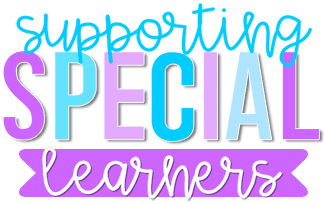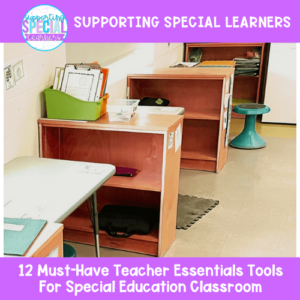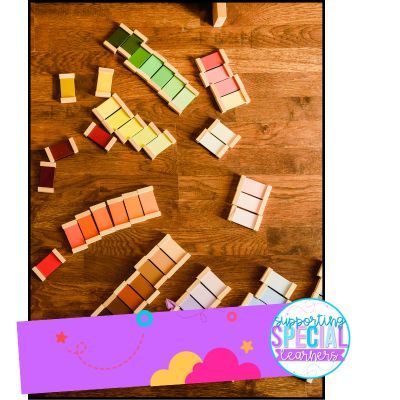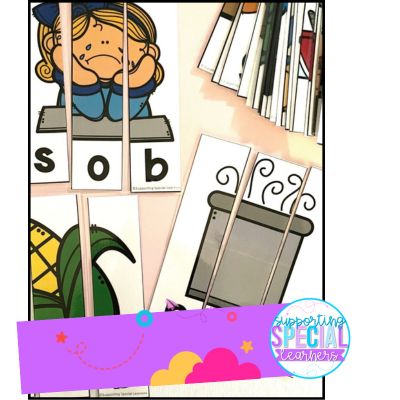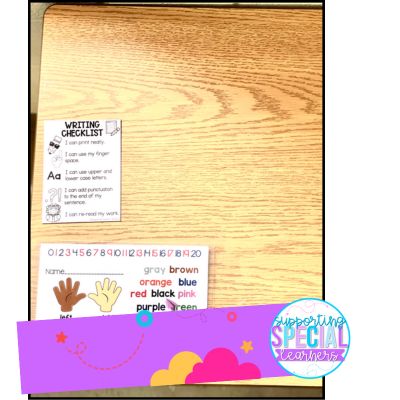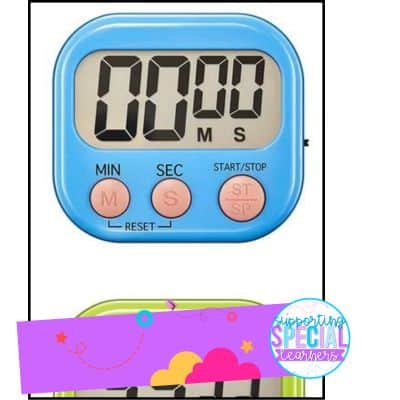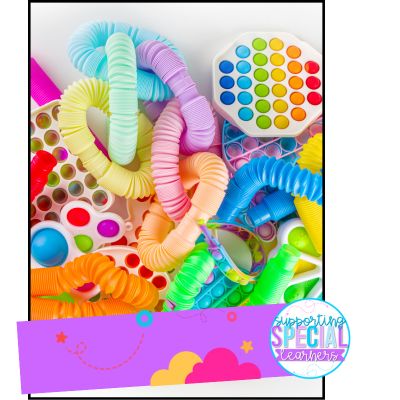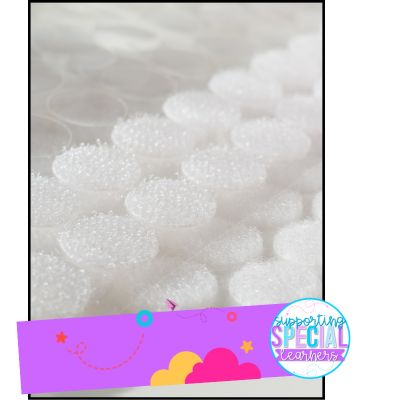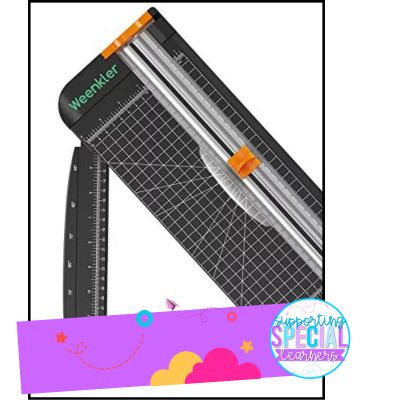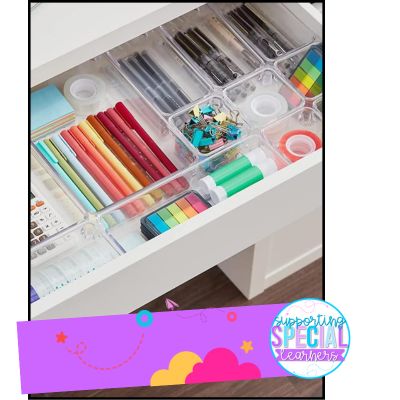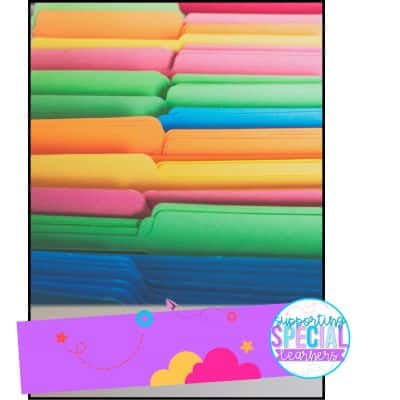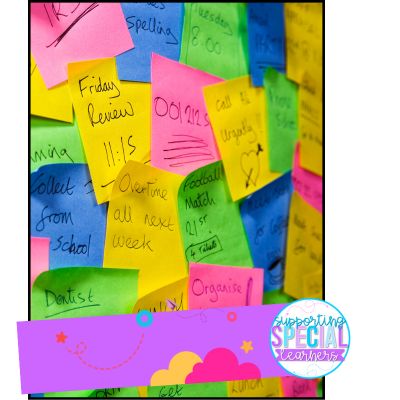In special education, having the right tools and resources is not just a good idea, it’s essential. For teachers who are passionate about helping students with different learning needs, the classroom becomes a place where anything is possible. Here, everything from laminators to sticky notes plays a big part in making learning better. This guide will show you the 12 things that every special education classroom needs to have, so that teachers are ready to help their students learn in their own unique ways.
Essential Tools for Classroom Organization
A well-organized classroom is essential for creating a positive and productive learning environment. Students are more likely to be engaged and focused when their surroundings are orderly and clutter-free. Teachers can save time and energy by having a system for storing materials and keeping track of paperwork. There are many different tools and resources available to help teachers organize their classrooms.
Being a special education teacher is the most rewarding job, but it can also be extremely exhausting! I have included links to the products on Amazon – these are affiliate links; therefore, I receive a small commission when you purchase the items using my links.
Here are my 12 must-have items for your special education classroom:
1. Laminator: Preserving Educational Materials
A laminator is more than just a machine; it’s a guardian of educational resources. By laminating key materials, teachers ensure that important documents and visuals withstand the test of time and frequent handling. This tool is especially beneficial in a special education setting, where durable, reusable materials are a necessity for ongoing learning.
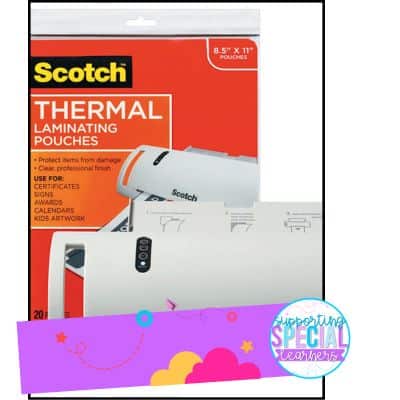
I own three Scotch Laminators, this might be a bit excessive, but it saves me during heavy prep times! I own two 9-inch laminators and one 13-inch laminator. As a special education teacher, having a personal 13-inch laminator is my number one classroom must-have. The 13″ is great because you can put file folders through it! These frequently go on sale, so keep an eye out!
2. Colored Plastic Bins: Organizing with Color Coding
Color-coded plastic bins are not just organizational tools; they are visual cues that help students navigate the classroom. These bins make it easier for both teachers and students to find and store materials, reducing clutter and enhancing the overall learning environment.
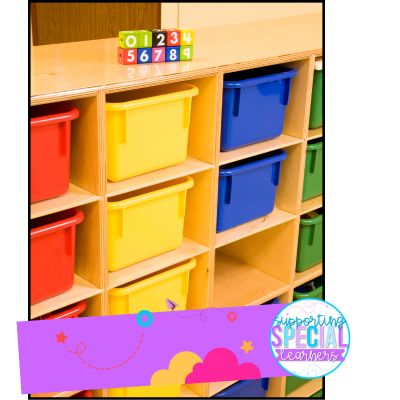
I love to color-code my classroom! I have six students, so I can assign each student a specific color. They place their communication folder and water bottle in their entry bin, and all of their work at their desk is in a bin (the same color). I also place their work in duo-tangs, which are the same color! Therefore, if you were assigned red, your entry bin, work bin, finished bin, and duo-tangs would all be red! I know another popular way is to assign a color to each subject! For example, all students would use their yellow bin for math work. Either way works!
3. Manipulatives: Hands-On Learning Tools
You will need the typical manipulatives like money, 2D shapes, and 3D shapes, but many other incredible manipulatives are also available. In a special education classroom, these hands-on materials cater to various learning styles, helping students grasp complex ideas through physical interaction and exploration.
You can use any manipulatives when it comes to sorting, counting, addition/subtraction, and so many other academic expectations. Those cute little erasers from Target and Michael’s work great! These manipulatives can also be used for break time or play. Use your students’ interests to pick the perfect set of manipulatives.
4. Personal Visuals: Customizing Student Learning
Personal visuals such as customized charts and aids are key in addressing individual learning needs. These tools help in breaking down tasks and instructions, making them more accessible and understandable for each student.
My students require several personalized visuals to help them navigate their day. Check out my classroom management bundle for all the visuals you may need! It includes posters, break cards, choice boards, first-then boards, token boards, behavior visuals, and so much more!
5. Classroom Visuals: Enhancing the Learning Environment
Classroom visuals like charts, diagrams, and labels play a significant role in creating an inclusive and engaging learning space. They provide students with constant, accessible references that aid in comprehension and recall.
I love functional classroom visuals! I use specific visuals that I place on each student’s desk, as well as their Individualized Activity Schedule (IAS). You can download these visuals for FREE from the resource library!
6. Timers: Managing Classroom Time Effectively
Timers are essential in structuring classroom activities and transitions. They help in maintaining a routine, which is particularly important in a special education setting where consistency and predictability can greatly benefit student learning.
You can find these on Amazon for a reasonable price. Be sure to get a visual timer with sound. I also have small kitchen timers on each student’s desk. You can find kitchen timers at the dollar store; they work perfectly as individual timers.
7. Fidgets: Supporting Sensory Needs
Fidgets are more than toys; they are sensory tools that help students focus and regulate their emotions. In a special education classroom, fidgets can be instrumental in providing the necessary sensory input to keep students engaged and calm.
8. Velcro Strips and Coins: Versatile Classroom Tools
Velcro strips and dots/coins offer endless possibilities for special education classroom organization and interactive learning. They allow for the easy creation and modification of learning materials, making them adaptable to various teaching and learning styles.
You will not regret getting them. Cutting Velcro is a tedious task; invest the extra few dollars and get Velcro coins instead.
9. Paper Trimming and Spring-loaded Scissors: Essential Cutting Tools
This is a two-in-one! Having a paper trimmer is a complete game changer when prepping adapted books, cutting out task cards, or anything that has a straight line. The spring-loaded scissors are essential when cutting out smaller pieces or any item that does not have a straight edge.
10. Drawer Organizers: Streamlining Storage
There’s something so satisfying about having an organized desk! Drawer organizers help in maintaining an orderly and efficient classroom. By keeping supplies neatly arranged, teachers save time and reduce distractions, allowing for a more focused and productive learning environment.
I use drawer organizers at school and home to keep all the little items like elastic bands and clips neatly organized. I like to store my favorite treats in the larger bins, so when you’re having a tough day or things aren’t going well, you can quickly pick me up without leaving your classroom/school!
11. Colorful File Folders: Simplifying Document Organization
Colorful file folders are not just for storing papers; they are a system for categorizing and quickly accessing important documents. This organization is crucial in a special education classroom where keeping track of individual student records and materials is key.
12. Post-It Notes: Quick and Easy Reminders
Post-it notes are small but mighty tools in a teacher’s arsenal. They serve as quick reminders, placeholders, and interactive learning aids, providing flexibility and spontaneity in lesson planning and classroom management.
Special Education Classroom Setup
A special education classroom is a dynamic space where educators nurture the growth and development of students with diverse learning needs. Beyond the walls of this classroom lies a world of possibilities, where every individual student is empowered to reach their full potential. To create this nurturing environment, careful consideration must be given to the classroom setup, ensuring that it is both functional and conducive to learning.
Teacher Area: Creating an Efficient Workspace
The teacher’s area is the command center of the classroom. It needs to be organized, accessible, and equipped with all the necessary tools for effective teaching. This space should inspire confidence and efficiency, allowing teachers to focus on what matters most – their students.
Student Learning Areas: Designing for Diverse Needs
Student learning areas should be diverse and adaptable, catering to the various learning styles and needs of special education students. These areas can include quiet zones, group tables, and individual workstations, each designed to provide the optimal learning environment for every student.
Sensory/Calming Area: Supporting Emotional and Sensory Regulation
A sensory or calming area is a safe haven for students who need a moment to regroup or manage sensory overload. Equipped with soft lighting, comfortable seating, and sensory tools, this space is essential for helping students self-regulate and return to learning activities refreshed.
Morning Meeting Area: Building Community and Routine
The morning meeting area is where the day begins, setting the tone for what’s ahead. It’s a space for community building, routine establishment, and engagement in group activities. This area fosters a sense of belonging and prepares students for the day’s learning.
Game and Activity Area: Encouraging Interactive Learning
Games and activities are not just fun; they are powerful learning tools. A dedicated area for interactive learning through games and group activities can significantly enhance engagement and reinforce key concepts in a memorable way.
Schedules and Focus: Structuring the Day for Success
Clear schedules and focus areas are crucial in a special education classroom. They provide structure and predictability, helping students understand what to expect and when. This clarity reduces anxiety and helps students focus on their learning tasks.
Decorating Your Room: Creating a Welcoming and Inclusive Environment
Decorating the classroom is about more than aesthetics; it’s about creating a welcoming and inclusive environment. The decor should reflect the diversity of the students and provide a warm, engaging atmosphere that stimulates learning and creativity. Special education classroom decorating ideas can range from thematic visuals to sensory-friendly elements, all aimed at enhancing the learning experience.
Curriculum Must-Haves for Special Education
Educators are constantly seeking ways to enhance the learning experience for their students with diverse needs. The classroom, therefore, transforms into a dynamic space where every tool and resource plays a significant role in fostering a supportive and inclusive learning environment. From the versatility of manipulatives to the power of technology, these must-have essentials empower teachers to cater to the unique strengths and challenges of each student, ensuring that every learner embarks on a successful educational journey. Whether it’s fostering self-expression through creative arts, developing social skills through interactive games, or mastering academic concepts through hands-on activities, the right curriculum must-haves empower special education teachers to create a classroom where every student thrives.
Customized Learning Materials: Tailoring Education to Individual Needs
In special education, one size does not fit all. Customized learning materials are essential in addressing the unique needs and abilities of each student. These materials should be adaptable, accessible, and designed to maximize individual learning potential.
Interactive and Engaging Lesson Plans: Keeping Students Motivated
Lesson plans in special education need to be interactive and engaging to keep students motivated. Incorporating a variety of activities, multimedia resources, and hands-on learning opportunities can make lessons more dynamic and effective.
Assessment Tools: Tracking Progress and Development
Assessment tools are vital in monitoring student progress and development. These tools should be flexible and varied, allowing for the assessment of different skills and learning styles. Regular assessment helps in tailoring instruction to meet each student’s evolving needs.
Inclusive Curriculum Design: Ensuring Accessibility for All Learners
An inclusive curriculum is key in a special education classroom. It should be designed to be accessible and engaging for all learners, regardless of their abilities or challenges. This approach ensures that every student has an equal opportunity to learn and succeed.
Personal And Professional Support Essentials
It’s a path where personal and professional support is not just beneficial, but essential. As a special education teacher, you are tasked with the incredible responsibility of shaping young minds that learn differently. This role demands not only a deep understanding of educational techniques but also a heart full of empathy and patience. It’s about finding that perfect balance between being an educator, a guide, and sometimes, a friend to your students.
But who supports the supporter? This is where Supporting Special Learners comes into play.
Empower Your Special Education Teaching With Our Resources
Every step you take in teaching special needs students is important in creating a more inclusive and effective learning environment. Supporting Special Learners helps you not only improve your teaching skills but also become part of a community that supports and empowers special education teachers and their students.
Supporting Special Learners offers a wide range of tools and strategies to help you deal with the unique challenges of a special education classroom. We can turn these challenges into opportunities for growth, learning, and positive change.
Remember, you are not alone in the world of special education. Supporting Special Learners is here to offer our resources to support you every step of the way as you help every unique learner reach their full potential.
Frequently Asked Questions
What should every special education classroom have?
Every special education classroom should be equipped with a variety of tools and resources tailored to meet the diverse needs of its students. Essential items include sensory tools like fidgets and noise-canceling headphones, organizational aids such as color-coded bins and clear labeling systems, and adaptable teaching materials like laminators and Velcro strips. Additionally, creating a welcoming and inclusive environment with thoughtful classroom setup and decoration is key. This includes having distinct areas for different activities, such as a calming area for sensory regulation and interactive zones for hands-on learning.
What should be required of teachers in the classroom?
Teachers in the classroom, especially in a special education setting, should possess a blend of professional skills and personal qualities. They need to have a thorough understanding of educational strategies and tools, along with the ability to adapt these to individual student needs. Patience, empathy, and strong communication skills are essential for effectively engaging with students who have diverse learning needs. Teachers should also be committed to ongoing learning and professional development to stay abreast of the latest educational practices and technologies.
How do you prepare to teach special needs students?
Preparing to teach special needs students involves a combination of formal education, practical experience, and personal preparation. It’s important to have a solid foundation in special education theory and practices, often gained through specialized training and certification programs. Hands-on experience through internships or volunteering in special education settings can provide valuable insights. Additionally, preparing on a personal level by developing patience, empathy, and creative problem-solving skills is crucial for adapting to the varied needs of special education students.
What makes a successful special education teacher?
A successful special education teacher is one who can effectively tailor their teaching methods to accommodate the unique needs of each student. This requires a deep understanding of different disabilities and learning challenges, along with the creativity to develop engaging and accessible lesson plans. Successful teachers in this field are also characterized by their patience, empathy, and ability to build strong, trusting relationships with their students. They are committed to their students’ growth and are adept at celebrating small victories and progress.
What new teachers need to know about special education?
New teachers entering the field of special education should know that this area of teaching is both challenging and incredibly rewarding. It’s important to understand the legal and ethical responsibilities involved in special education, including developing and following Individualized Education Plans (IEPs). New teachers should be prepared to work collaboratively with families, therapists, and other professionals to support their students. Additionally, they should be open to continuous learning and adapting, as each student will bring unique challenges and opportunities for growth.
